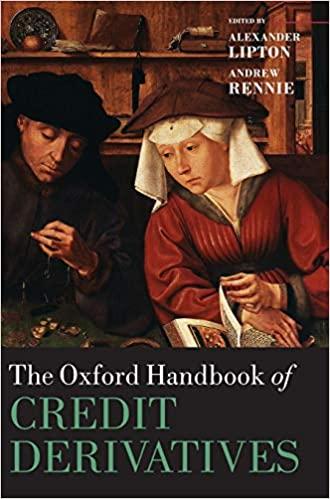Question
Sabrina Gupta, an investment advisor with a major brokerage firm, was examining Wal-Mart Stores, Inc. (Wal-Mart) stock and its valuation. Gupta wondered whether to recommend
Sabrina Gupta, an investment advisor with a major brokerage firm, was examining Wal-Mart Stores, Inc. (Wal-Mart) stock and its valuation. Gupta wondered whether to recommend the stock to any of her new clients or to existing clients who did not currently have Wal-Mart in their portfolios.
Her key task was to use an intrinsic value approach to price the shares and to then compare the resulting price with the price at which the stock was traded in the market. Gupta wanted to use alternative valuation methods and assumptions to produce intrinsic value estimates for Wal-Mart stock.
She was interested in seeing if the alternative methods would point to a consensus regarding the valuation of the stock and to see if the valuations suggested an investment opportunity given the current market price. Methods she contemplated to use were:
Multi-stage growth model
Price Earnings Multiple
Most valuation methods Gupta considered required a common set of inputs:
Future Cash Flows to Wal-Mart Investors
Growth rate of future cash flows
Discount factor or required rate of return by Wal-Mart investors
Gupta gathered data to determine each of the above.
Gupta thought that Dividends to Wal-Mart shareholders would adequately capture the cash flows to Wal-Mart shareholders; she also thought that this approach would simplify her task and she would revisit more complex valuation models if she felt the need.
Gupta thought that CAPM would provide her a relatively reliable estimate of the required rate of return. CAPM based required rate of return can be estimated by using a risk free rate, systematic risk of the firm and equity market risk premium. Gupta thought that in a valuation exercise that involve long term cash flows, 10-year government bond yield would be an appropriate risk free rate of return estimate. She checked the 10 year note rate and found out that it was about 3.68%. Gupta searched for Wal-Mart beta in Bloomberg. Bloomberg estimates betas by regressing the S&P 500 returns on the firm returns over the past two years and arrives at a raw beta estimate. Bloomberg makes an adjustment in raw beta based on some academic research. Gupta is confident that Bloomberg adjustment is justified and she uses Wal-Mart beta estimate of 0.66 in her analysis.
While Gupta is aware of the importance of EMRP assumption, she thinks that Bloombergs historical estimate of 5.05% is a safe assumption. She is aware of the fact that some studies suggest a larger risk premium of approximately six per cent, while others suggest a much lower forward-looking premium of less than four per cent. She is mindful of the arbitrariness of her assumption, and she takes a note to revisit this issue if her valuations produce unreasonable estimates.
Anticipated dividend growth (g) is often estimated in a variety of ways.
First, observed historical dividend growth can be assumed to continue in a perpetual fashion.
Second, future dividend growth can be estimated on the basis of recent estimates of analysts.
Gupta noted that the consensus annual Wal-Mart dividend for fiscal year 2011 was $1.21, and one respected analyst had estimated the expected constant dividend growth (in perpetuity) at approximately 3%.
As the chart suggests, both earnings and dividend growth rates are declining but they seem to be higher than the respected analysts estimates. Gupta decides to use several alternative perpetual growth assumptions to see the impact on price. Since Gupta decided to use variants of dividend discount model (DDM), she checked the anticipated earnings for 2011. Analysts estimates suggested $4.10 earnings per share. Gupta decided to use 10% growth rate from 2011 to 2012 and assumed a steady decline to 3% in 13 years (until 2024) where the perpetual growth rate of 3% resumes. She also assumed that WalMart will increase its dividend payout ratio from 30% to 55% from years 2012 to 2024. You are asked to reproduce Guptas analysis of multi-stage growth model and double check her valuation by using an earnings multiple. You have all the data you need to conduct the multi stage discounted growth model analysis, but you will need to do some research about the multiples valuation.
Step by Step Solution
There are 3 Steps involved in it
Step: 1

Get Instant Access to Expert-Tailored Solutions
See step-by-step solutions with expert insights and AI powered tools for academic success
Step: 2

Step: 3

Ace Your Homework with AI
Get the answers you need in no time with our AI-driven, step-by-step assistance
Get Started


